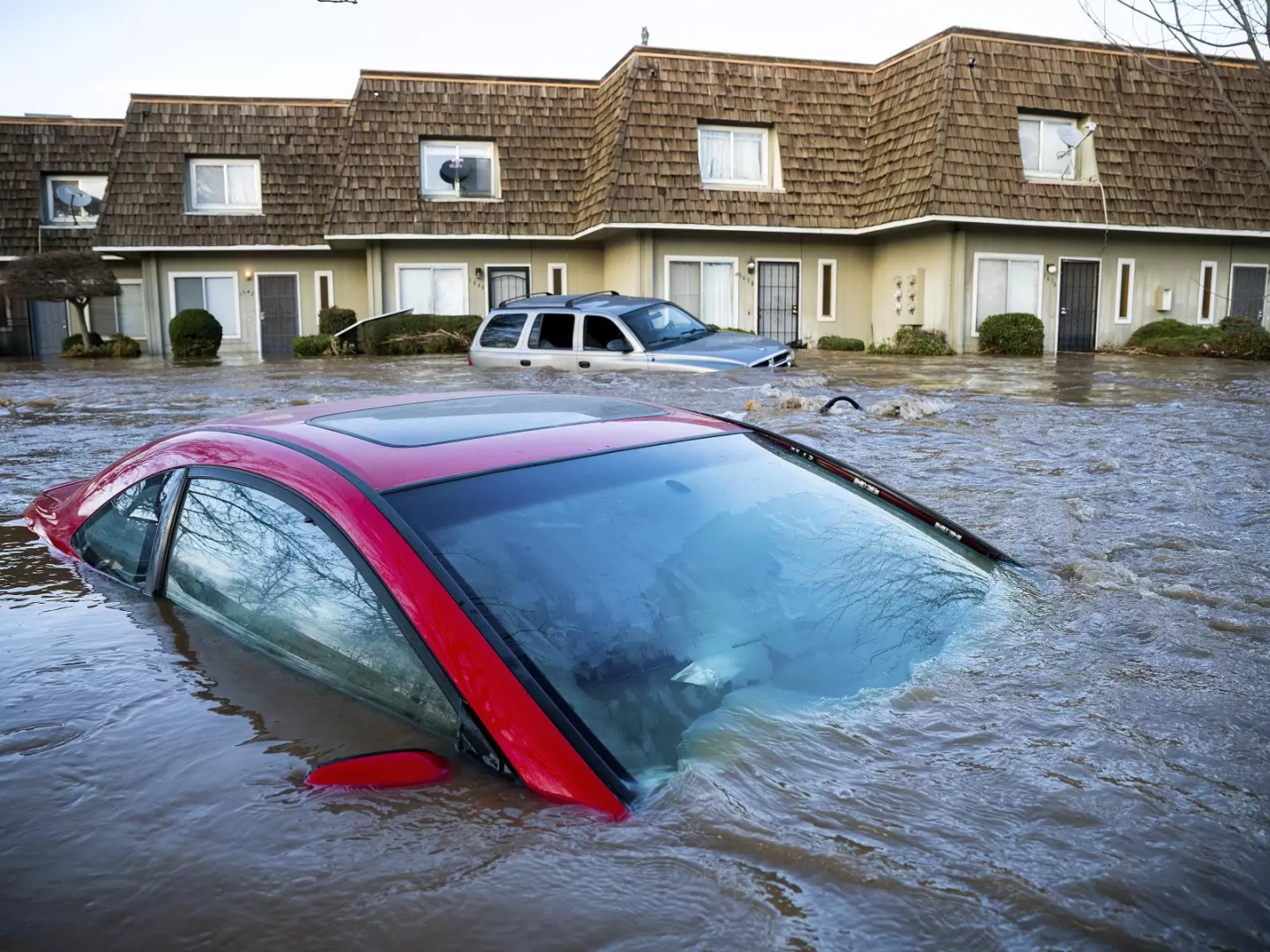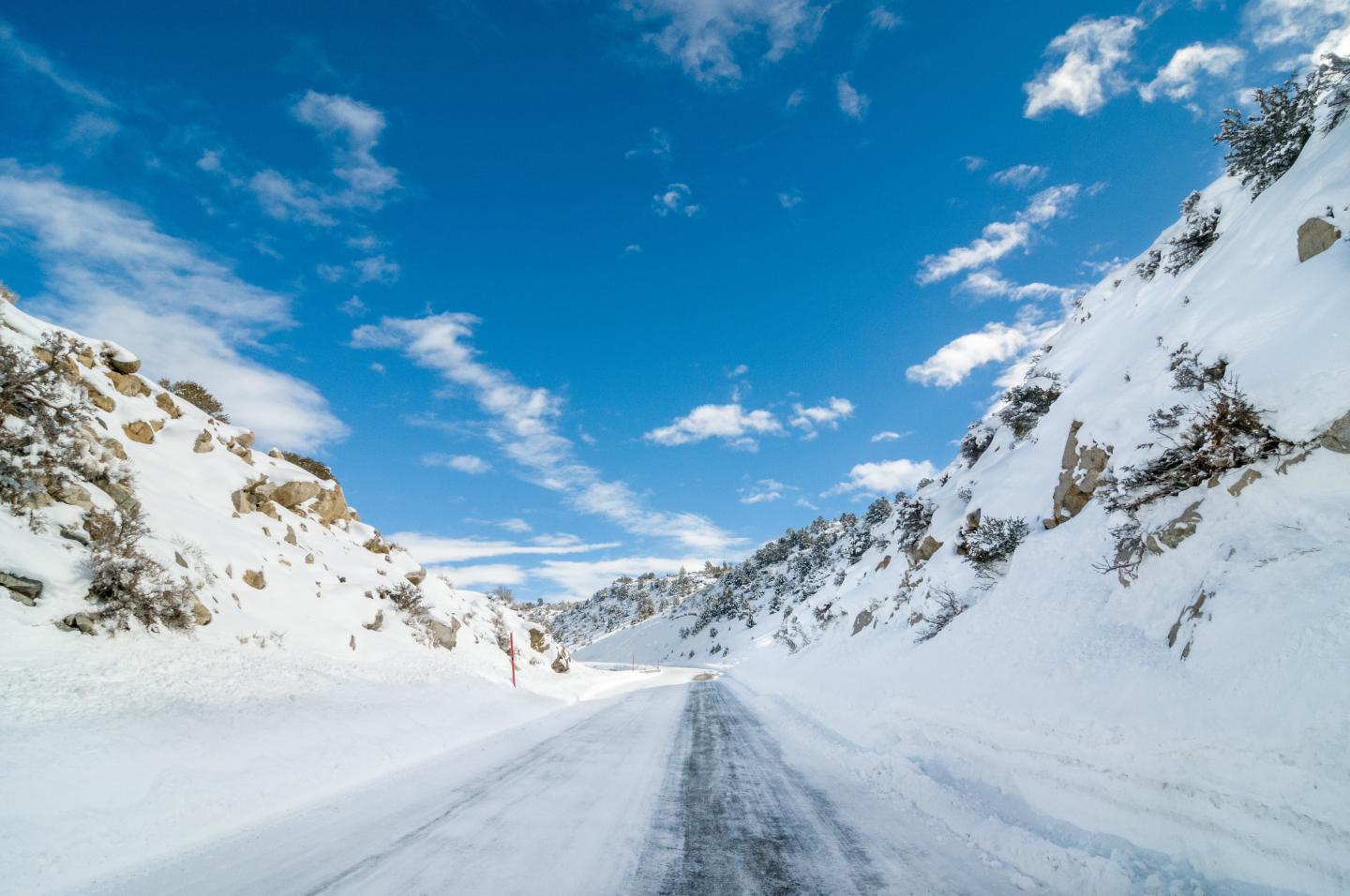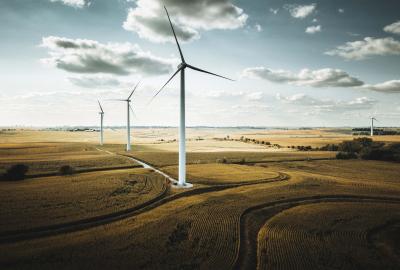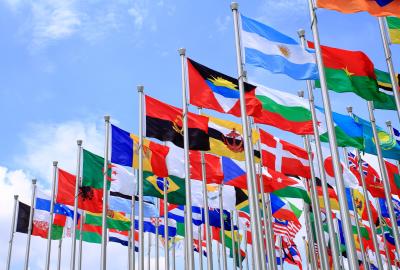What does California's flooding (and drought) have to do with climate change?
For the past several years, Californians have been desperate for rain to quench the state’s worst dry spell in at least 1,200 years. Scorching temperatures have shriveled crops and drained reservoirs, triggered power outages and led to wildfires that destroyed communities and burned millions of acres of forests.

On New Year’s Eve 2022, the water that Californians had wished for finally arrived, but it wasn't the blessing they'd hoped for. For three weeks, an onslaught of atmospheric rivers — plumes of tropical moisture — coming in from the Pacific Ocean battered much of the state with torrential rain and heavy snow.
The runoff overflowed riverbanks and surged through towns, pulling down drought-stressed trees and dissolving parched mountainsides into avalanches of mud. The storms left at least 21 people dead — many of them carried away by flash flooding.
“Cycles of drought and rainfall are characteristic of California’s climate. But human-caused climate change has made these events more intense and severe,” says climate scientist Shradda Dhungel, of the Environmental Defense Fund. “Rising summer temperatures make the soil and vegetation drier, increasing the chance of drought and wildfires.
"Then in the winter, when California gets most of its precipitation, warmer air with massive amounts of moisture unleashes these big storms that are wetter and more intense. Because of these two sets of conditions, it’s possible to have more intense droughts and more intense storms and flooding.”
The link between extreme weather and climate change
An emerging body of research known as attribution science is focused on determining to what extent the growing intensity and frequency of severe weather can be directly attributed to climate change.
According to the Center for Climate Sciences at NASA’s Jet Propulsion Laboratory, with every 1.8 degF (1 degC) increase in sea surface temperatures, the number of extreme storms has risen by about 21%. If climate model projections hold true, extreme storms may increase 60% by century’s end.
Likewise, the blistering heat and persistent drought in recent years reflects the increase in temperatures brought on by the growing concentration of greenhouse gasses in the atmosphere.
In southwestern North America, about 19% of the severe 2021 drought, and 42% of the extended drought in the 21st century, can be attributed to human-caused climate change, according to a study published in the journal Nature Climate Change.
When it rains, it pours
Just three months before the latest wild weather hit, researchers at the Climate and Global Dynamics Laboratory at the National Center for Atmospheric Research released a study warning that climate warming has already doubled the risk of a weeks-long extreme storm sequence capable of producing a California mega-flood.
“This is not something that is in the far tail of unlikely probability," said co-author Daniel Swain, in a briefing about the findings. "This is something that is very plausible and very well could happen sooner, rather than later.”
With each one degC increase in temperature, the air holds 7% more moisture. So further warming “will increase that risk even more,” says Swain, “potentially resulting in a tripling or even quadrupling of that risk relative to what it would have been about a century ago.”
Does the flooding in California mean the drought is over?

The snowpack in California’s Sierra Nevada is crucial to the state’s water balance. Spring runoff tops up reservoirs and can be captured for drinking, irrigation and power generation. With higher temperatures, though, more precipitation falls as rain rather than snow, and the snowpack melts sooner and quicker.
"These storms are more of a relief than a reversal of the current, multi-year drought in California," says EDF's Dhungel. "Though most reservoirs are at historically average levels, the bigger ones are still at about 50% capacity. The snowpacks are twice what they were last year but unseasonably warmer temperatures in the spring and summer months could trigger an earlier thaw season and more rapid melting. And we don’t have a sense of what the next months will hold. If there’s a rapid increase in temperature, then the snowpack could melt too fast to replenish the aquifers.”
The growing toll of climate driven extreme weather events
The damage from California’s recent storms is expected to exceed $1 billion. According to the National Oceanic and Atmospheric Administration, the U.S. experienced 18 billion-dollar climate and weather disasters in 2022, resulting in the loss of 474 lives. Last year marked the eighth consecutive year in which the country experienced 10 or more climate and weather events with losses exceeding $1 billion.
Dhungel and other experts say the state needs to better prepare for episodes of too much water, even as it strives to make do with too little.
"The infrastructure we have in place is from the 20th century, built for the needs of 20 million people and fewer extreme cases of drought and deluge," says Dhungel. "Now there are almost 40 million people and more intense extreme events, and the infrastructure hasn’t kept pace.”
California is planning to build its capacity to harvest storm water over the next several years, and the state has earmarked $54 billion to fight climate change, reduce pollution and support clean energy — although Gov. Gavin Newsom recently announced cuts to some climate change programs to help reduce a projected $22.5-billion budget deficit.
Other programs are aimed at reducing water use. The state awarded $40 million in grants to help landowners begin to transition up to 1 million acres of irrigated farmland to habitat for wildlife, recreational spaces and other uses that require less water.
The grants are part of California’s new land repurposing program, which was modeled after EDF-sponsored legislation in the state. EDF will co-lead the implementation of the program.
Hope for a warming planet
Get the latest Vital Signs stories delivered to your inbox


